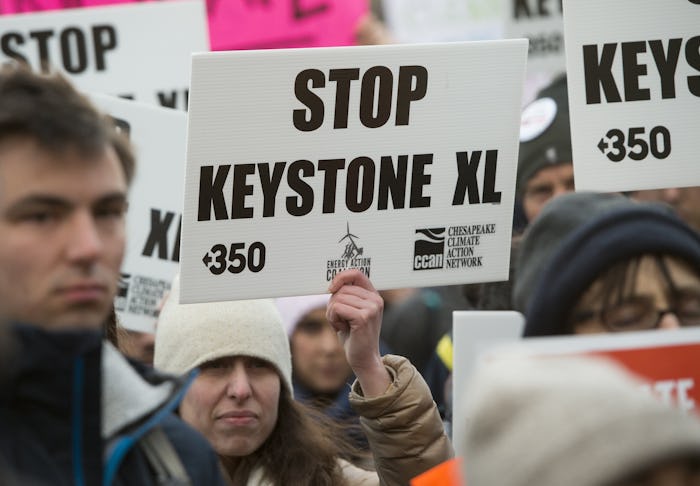News

Keystone XL Would Endanger These Species
The Keystone XL Pipeline has been shrouded in controversy over fears what transferring almost a million barrels of oil per day across 875 miles could mean for the environment, especially when that environment includes the Great Plains, rivers, and more than 50 streams. Now that President Trump has signed an executive order clearing the way for the construction of the pipeline, conservationists are up in arms. How would the Keystone XL pipeline affect local wildlife? There are several species scientists have said are directly at risk.
During his first days in office, President Trump signed an executive order to "get that pipeline built," according to CNN. Environmental groups were quick to condemn the move. Tom Steyer, the president of NextGen Climate said in a statement, according to CNN:
The pipelines are all risk and no reward, allowing corporate polluters to transport oil through our country to be sold on the global market, while putting our air and water at serious risk.
National Geographic has identified four animals in particular that would be put in danger as a direct result of the Keystone XL pipeline: the whooping crane, the greater sage-grouse, and the swift fox. In addition, there is one endangered species that the U.S. State Department has identified would be put in greater danger of extinction, the American burying beetle, according to National Geographic.
The proposed Keystone pipeline route would also cross waterways which, in the case of an oil spill, could hurt the endangered pallid sturgeon and two other birds, the least terns and the piping plovers, National Georgraphic reported.
But even without a major oil spill from the Keystone pipeline, wildlife will be affected. Jim Murphy, senior counsel for the National Wildlife Federation told National Geographic the whooping crane is most vulnerable:
The whooping crane is a species that we've really homed in on. Power lines account for about 40 percent of juvenile whooping crane mortality, which is a big deal when you're talking about a bird that has a population of about four hundred in the wild. Those concerns have never really been taken seriously.
On April 29, the Department of the Interior sent a letter expressing its environmental concerns about the pipeline to the State Department, contesting the existing Draft Environmental Impact Statement, according to ThinkProgress. The letter raised particular concerns about wetlands in the pipeline's path, adding that it could jeopardize water safety and said it's construction would have "permanent impacts" on wildlife, ThinkProgress added.
None of those concerns seem to trouble President Trump, who only asked for a single revision on the agreement: that it be built with pipes manufactured in the U.S., according to CNN. The environment, it appears, will get no protection from the White House.